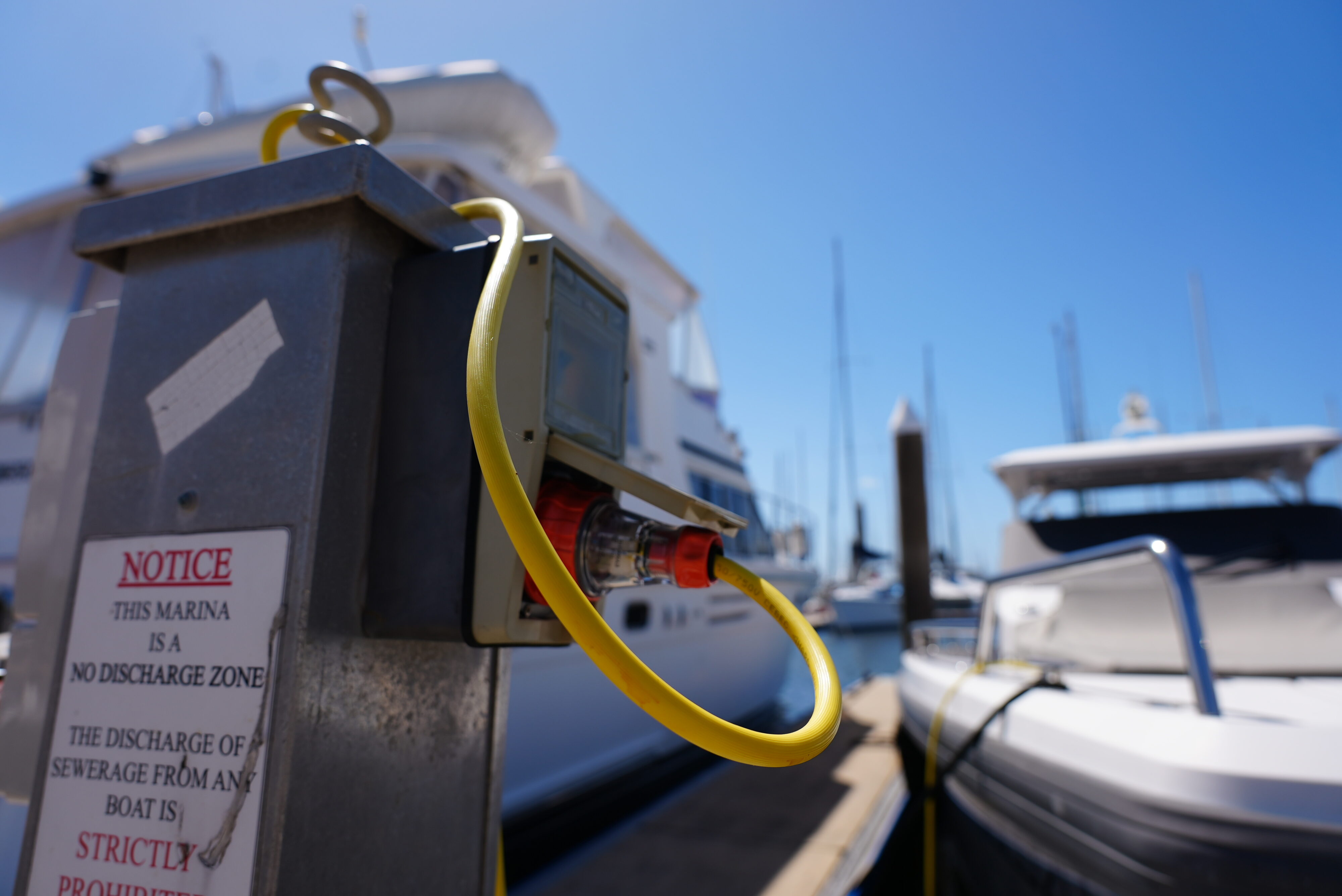
Is your shore connection safe and compliant
By Mark Smith
CEng, CMarEng, FIMarEST, BAppSc(MarEng)
Engineering Surveyor
Accredited Marine Surveyor: AMSA – 3242-6148 4
Qld EC lic. 73995
eCMID – AVI00674
Based in Brisbane, Australia, Mark Smith is an AMSA Accredited Marine Surveyor and a Chartered Marine Engineer with over 40 years’ experience. Mark is a member of the Australasian Institute of Marine Surveyors, and Fellow of the Institute of Marine Engineering, Science and Technology (IMarEST). Mark is the owner of SET Maritime & Electrical, designer of the revolutionary new shore connection device – ESHORE.
Are you confident your shore connection is SAFE?
Is your boat COMPLIANT as per National Standard for Commercial Vessels (NSCV) and the Australian/New Zealand Standard AS3004:2014 Electrical Installations – Marinas and boats – Boat installations?
Shore connections of single-phase and 3-phase installations for berthed Pleasure Craft and Domestic Commercial Vessels (NSCV) vessels at wharves, jetties and marinas are expected to comply with safety requirements detailed within AS/NZ 3004.2:2014 – Electrical Installations-Marinas and Boats; Part 2: Boats.
Failure to comply with Australian Safety Requirements may result in fines.
Check the following table to see if you have the required functionalities.
Table 1: Safety and Compliance Check – Shore connection functionalities
| SINGLE PHASE | THREE PHASE |
|---|---|
| A circuit breaker operating in all live conductors of the supply, with the neutral conductor to open circuit when tripped and to be fitted adjacent to the shore supply inlet on the vessel. | A circuit breaker operating in all live conductors of the supply, with the neutral conductor to open circuit when tripped and to be fitted adjacent to the shore supply inlet on the vessel. |
| A test device, connected on the supply side of the vessel’s shore supply circuit breaker to check, and visually indicate, the polarity of the shore supply in relation to the vessel’s system.* | A test device, connected on the supply side of the vessel’s shore supply circuit breaker, to check and visually indicate the polarity of the shore supply in relation to the vessel’s system. |
| An interlocking circuit to ensure the shore power cannot be connected unless the polarity is correct.* | A means of checking the phase sequence in relation to the vessel’s system. |
| Indication to show when the shore supply is energised. | An indication to show when the shore supply is energised |
| Appropriate switchgear to facilitate the reversal of polarity. | Appropriate switchgear to facilitate the reversal of phase sequence |
| An interlocking circuit to ensure the shore power cannot be connected unless the polarity and phase rotation are correct |
*Except where shore power is supplied to the boat by an on-board isolating transformer or converter with a polarized output
IS YOUR VESSEL SHORE CONNECTION SAFE?
SET Maritime & Electrical has been involved in Domestic Commercial Vessels (DCV) over the past 6 years, specialising in electrical compliance for Plan Approval and Surveys of vessels.
In this time a range of different shore connection installations has been inspected and checked against the required Standards.
In most cases full compliance has not been met.
The most critical safety factor for a vessel is Reversed Polarity which presents a very serious risk of electrocution.
This occurs when the Active (red) and Neutral (black) electrical wires are reversed.
The vessel’s wiring is correct for Polarity when this is verified by a Certificate of Electrical Compliance and is issued by an Electrical Contractor.
WHAT YOU NEED TO KNOW
The issue is that at each time a connection is made, the Polarity of shore connections are unknown to the vessel owner, due to unknown maintenance or interference. If the polarity of the power supply is reversed, this will render the vessel’s electrical safety devices ineffective.
The shore connection products available on the market are all based upon a Polarity Monitoring Device to detect reverse polarity with a simple circuit shown below as the fundamental design of them all.
With the large variety of interpretations on how the mandatory functional requirements for shore connections are met, that have been detailed above, the process involved in monitoring for correct Polarity, is to have functional earthing (FE) permanently connected.
This is undertaken to ensure the correct operation, rather than for the safety conditions associated with protective earthing.
The combination of both protective and functional earths are required as per AS/NZ 3000:2018 – Wiring Rules, and it should be noted that FE does not offer protection from electrocution from a hazardous voltage.
HOW DO YOU ENSURE COMPLIANCE AND SAFETY?
Your shore connection device must meet the safety functionality detailed within the Standard for single-phase and three-phase electrical installations.
SET Maritime & Electrical has designed a device that addresses the issues raised called ESHORE. For the Polarity Monitoring device, the Functional Earthing (FE) circuit makes only a momentary connection to check polarity and allows for the interlocking contactor to allow for supply to the vessel. Upon completing the test it will disconnect the circuit, thereby reducing the risk of electrocution from a hazardous voltage.
ESHORE is a compact ‘Plug and Play Shore Connection’ that is Australian designed and manufactured. It’s unique and patented electrical design was created to ensure the safety of boat owners, meet regulatory standards and to save you time and money on incorrect connections!
For further information visit setmaritime.com.au or call Mark on 1300 550 810.